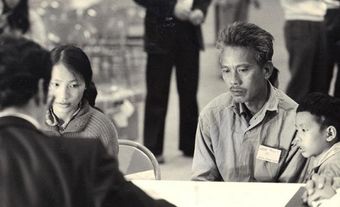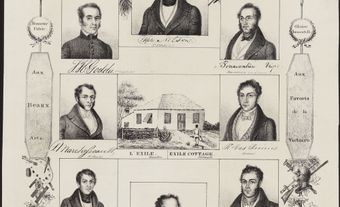The Battle of Paardeberg was the first time men in Canadian uniform, fighting in a Canadian unit, made war overseas. It also inspired one of the first remembrance ceremonies in Canada: from 1900 until the end of the First World War, Canadians gathered not on November 11, but on February 27 — Paardeberg Day — to commemorate the country’s war dead and its achievements in South Africa (see also Remembrance Day in Canada).

One of the most intriguing artifacts once on loan to the Canadian War Museum was a white handkerchief. Frayed and dirty, it had been hoisted on a rifle by Boer commandos surrendering to the troops of the Royal Canadian Regiment — one of whom considered the rag a worthy battlefield keepsake.
It was brought home from Paardeberg, South Africa, where on 27 February 1900 Canadian soldiers were hailed across the British Empire for defeating a 4,000-strong Boer army, and handing Britain its first significant victory in the South African War.
The Battle of Paardeberg was the first time men in Canadian uniform, fighting in a Canadian unit, made war overseas. It also inspired one of the first remembrance ceremonies in Canada: from 1900 until the end of the First World War, Canadians gathered not on November 11, but on February 27 — Paardeberg Day — to commemorate the country’s war dead and its achievements in South Africa (see also Remembrance Day in Canada).
Paardeberg, or “horse hill” in the Afrikaans language, is the mountain that casts its shadow over a stony, sun-baked plain in central South Africa, not far from the city of Bloemfontein, then the capital of the Boer republic of the Orange Free State. In 1900, a battalion of 1,000 Canadian troops were among a much larger British column marching on the city. En route, they confronted and encircled a Boer force that had dug into trenches on the banks of the Modder River at Paardeberg.

The British laid siege to the Boers for days, pounding their encampment, or “laager,” with artillery fire. On the morning of 18 February, the Canadians under the command of Lieutenant-Colonel William Otter (a veteran of the North-West Resistance) were ordered to make a frontal assault on the enemy trenches and force a surrender.
The exposed plain offered poor cover for an infantry attack, and by nightfall over two dozen Canadians lay dead and dying among the sourgrass and the anthills, while the terrified survivors of the failed assault crawled back to their own lines. Sixty were wounded. Among the dead lay 27-year-old Private James Findlay of Barrie, Ontario, shot through the heart, the first Canadian soldier ever killed across the seas.
On the night of 26–27 February, the Canadian battalion, after several days of rest, was ordered to stage an assault on the Boer lines. Once again, their attack across the open plain was stopped by enemy fire, and 13 more Canadians were killed. But this time only half the battalion withdrew to safety; the rest clung to the ground until morning or dug their own makeshift trenches only 55 meters from the Boers. At dawn the Canadians resumed firing on the enemy, and by 6:00 a.m., the besieged Boers, running out of supplies and keen to bury their dead, raised their white flags and surrendered.
The battle was a turning point in the war for Britain, and Canada received much of the credit. Queen Victoria sent a congratulatory telegram to the troops. At Paardeberg, British Field Marshal Frederick Roberts hailed the troops. “Canadian,” he said, “now stands for bravery, dash and courage.”
South Africa marked the beginning of a long history of Canadian foreign involvement that would stretch through two world wars,Korea, Bosnia and Afghanistan. The Boer War, as it’s also known, lasted from 1899 to 1902 and took the lives of 267 of the 7,368 Canadians who served there. It was a war of imperial conquest by the greatest military power on the planet, against two independent Boer republics whose gold — the richest deposits in the world — Britain coveted. Whether or not Canada was right to participate, the conflict gave us our first sense of national pride through a feat-of-arms on foreign soil, 17 years before the Battle of Vimy Ridge would rekindle such feelings.
In fact, the towering South African War memorial that rises at University Avenue in Toronto, topped by a winged angel, was designed by sculptor Walter Allward, who would later design his more famous Vimy memorial in France.
There are dozens of South African War memorials, plaques and statues in town squares, legislature grounds and city parks from Vancouver to Halifax. We pass them now without a glance, forgetting what they commemorate. But for two decades after the turn of the last century, they were important symbols of Canadian pride, around which people gathered every 27 February, to say prayers and honour veterans on Paardeberg Day. Later, the sacrifices of a far greater and bloodier conflict would consume the nation.

 Share on Facebook
Share on Facebook Share on X
Share on X Share by Email
Share by Email Share on Google Classroom
Share on Google Classroom


